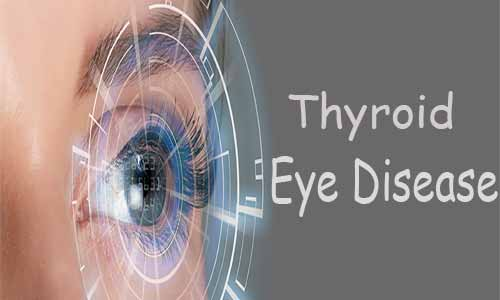
Graves’ ophthalmopathy is a common autoimmune disease of the
orbit. It presents with a variety of manifestations such as proptosis, lid
retraction, diplopia, and optic neuropathy. One of the most serious visual loss
threats for patients with GO is dysthyroid optic neuropathy (DON), the
diagnosis of which includes clinical characteristics such as decreased visual
acuity, presence of relative afferent pupillary defect, color defect, and
visual field defect. The most common pathology of DON is enlargement of extraocular
muscles causing compression of the optic nerve.
Orbital Computed Tomography (CT) is useful in the assessment
of crowding of the ocular muscle and swelling of soft tissue. The Barrett’
index (BI), proposed by Barrett et al, is an assessment of muscle expansion as
a percentage of horizontal or vertical extraocular muscles occupied by the
height or width axis. It is a good indicator of DON detection, with high
sensitivity and specificity at BI 67%.Some researchers previously reported that
fat prolapse through superior ophthalmic fissure is a good indicator for
diagnosing DON.
It is generally accepted that anatomical muscle and orbital
size can vary with gender, age, and ethnicity and reports of the use of BI and
fat prolapse as an indicator for diagnosis of DON in Southeast Asian
populations are very limited. The purposes of study by Kemchoknatee et al was
to evaluate and compare the performance of BI and fat prolapse in detecting
dysthyroid optic neuropathy, and to study the correlation of BI and fat
prolapse with visual status.
Between January 2011 and December 2020, orbits affected by
GO were retrospectively reviewed and classified into 2 groups based on the
presence or absence of DON. All orbital-computed-tomography (CT) scans were
measured for BI and fat prolapse. Diagnostic performance of BI and fat prolapse
was analyzed and evaluated in relation to visual outcome.
Study included orbits with DON (23 orbits) and the absence
of DON (61 orbits). BI was significantly higher in patients in the DON group
(47.68 ± 12.52%) compared to the absence of DON (37.55 ± 10.88%), p < 0.001.
The presence of fat prolapse was significantly higher in the
DON group (p = 0.003).
BI at 40% provided best diagnostic performance with
sensitivity of 78.3%/specificity of 63.9%.
The presence of fat prolapse 4.5 mm via the
superior-ophthalmic-fissure (SOF) had a lower sensitivity compared with fat
prolapse 2.5 mm.
Comparison between area under the curve (AUC) of BI and fat
prolapse revealed no statistically significant difference (AUC 0.742 and 0.705
in BI and fat prolapse, respectively, p = 0.607).
A negative correlation between the BI and fat prolapse with
VA and VF was observed (p < 0.001).
Currently, there are no definite diagnostic criteria for
dysthyroid optic neuropathy, but orbital parametric values are useful in
detecting it. Some researchers have found orbital muscle volume to be a
predictor of the disease, the present study highlighted the importance of
employing Barrett’s index in identifying DON. A significant difference was
found between BI values of patients with and without optic neuropathy. This
cohort study revealed the best diagnostic value to be a BI of 40%, which
yielded sensitivity/specificity of 78.3%/63.9%.it is important for physicians
not to rule out the possibility of DON in patients without muscle enlargement
on orbital CT scan or rely solely on employing a larger BI in supporting
diagnosis. In fact, BI should be used in conjunction with an ophthalmologist’s
clinical assessment.
This study highlighted the benefit of measurement of muscle
index as a simple diagnostic method. In addition, most appropriate BI in our
study was lower than those employed in western studies. Ophthalmologists should
suspect DON based on clinical ophthalmic findings in combination with the
presence of fat prolapse with or without increase BI on orbital CT scan.
Slightly larger BI and the presence of fat prolapse in GO patients without a
clinical of DON should be closely monitored as those may have a higher risk of
optic neuropathy for early treatment.
Measurement of muscle index (BI) is a simple diagnostic tool
for detecting DON in Thai populations using a BI of 40%, yielding a sensitivity
78.3% and a specificity 63.9%. The presence of fat prolapse (2.5 mm) provides a
lower sensitivity (52.2%) compared with a BI at 40% in Thai population.
Patients with slightly larger muscle size or fat prolapse through SOF should be
suspected of dysthyroid optic neuropathy for early treatment.
Source: Kemchoknatee et al; Clinical Ophthalmology 2022:16
https://doi.org/10.2147/OPTH.S364987

